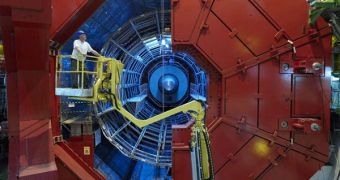Next to the International Space Station (ISS), the Large Hadron Collider (LHC) is arguably the most complex and amazing human scientific project ever constructed. Its main goal is to recreate the conditions that existed just a few fractions of a second after the beginning of the Universe, immediately after the event known as the Big Bang. In doing so, physicists hope to discover traces of the elusive Higgs particle, a fifth boson, or force carrier that would complete the most accurate description of everything around us, known simply as the Standard Model.
The Higgs is believed to be the main element that makes matter acquire mass and vice-versa, so discovering it could enable a multitude of applications throughout physics and chemistry. The LHC, lying on the French-Swiss border, under the city of Geneva, Switzerland, was built primarily for discovering the Higgs, also known as God's Particle. The impressive tunnels of the particle accelerator span a diameter of 27 kilometers, and are operated by a consortium of international scientists, under the supervision of the European Organization for Nuclear Research (CERN).
The word “hadron” in the accelerator's name refers to particles made up of quarks (elementary particles), held together by the strong force, generated by gluons, a type of bosons, Wired reports.
The success or failure of the LHC in this endeavor hangs on the impressive volume of work that those involved in the project have put in. Originally scheduled to begin circulating proton beams through the tunnels in late 2008, an incident hampered with the planned operations at the accelerator, triggering a large-scale helium leak. Now, one year later, the damages have been fixed, and CERN officials announce that they are ready to start circulating beams through the LHC again. The work could start as early as next week, with the first collisions scheduled to take place soon afterwards.
There are four particle detectors along the tunnels – ATLAS, CMS, ALICE and LHCb –, each of them in charge of discovering a different type of matter. For example, the LHCb will investigate what happened to the antimatter that was generated immediately after the Big Bang, but that disappeared shortly afterwards. ALICE is in charge of studying quark-gluon plasma, a “liquid” state of matter that only existed for an extremely short period of time after the beginning of the Universe. On the other hand, ATLAS will look for signs of new dimensions, and also for the origin of mass (the Higgs boson), alongside CMS. The latter will also be investigating the nature of dark matter.

 14 DAY TRIAL //
14 DAY TRIAL //